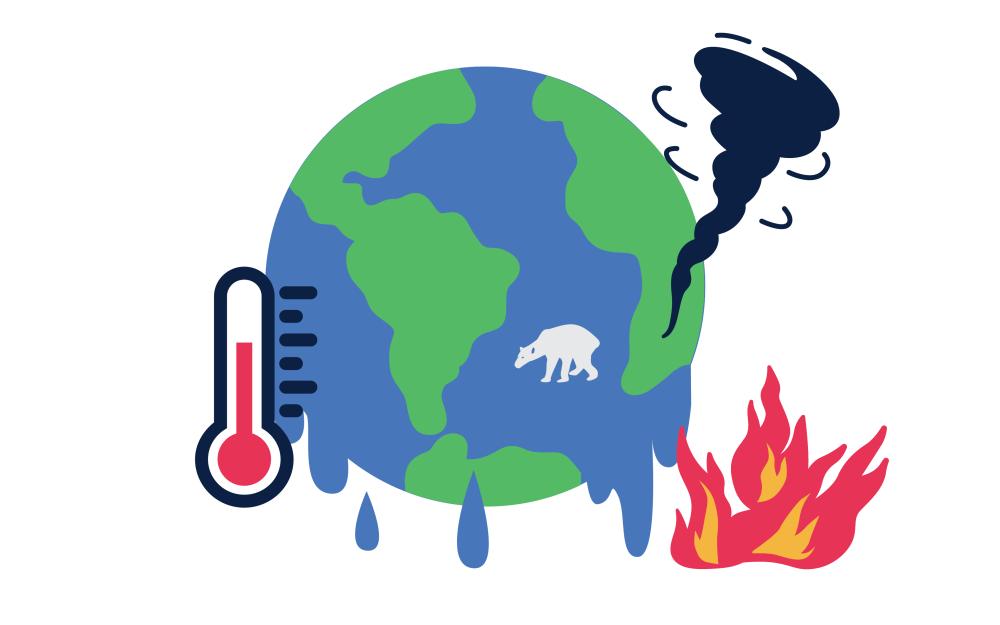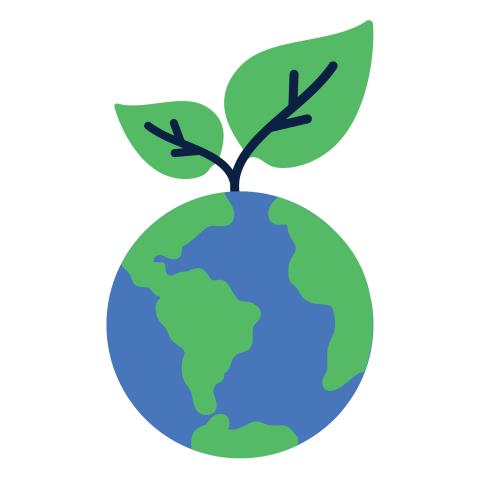Planet Texas 2050 integrates artistic approaches and frameworks into research around climate change and resiliency with new artist fellowship program
by Alicia Dietrich

While the arts are often framed as a way to tell stories about complex topics like climate change — and they often perform that role beautifully — Heidi Schmalbach and many of her partners in the UT College of Fine Arts know artists bring so much more to the table than storytelling.
Schmalbach directs Planet Texas 2050, one of The University of Texas at Austin’s three grand challenge projects launched in 2016 to cultivate and foster inter- and transdisciplinary research around complex problems facing society such as climate change, artificial intelligence and community health. Facilitated by the Office of the Vice President for Research, Scholarship and Creative Endeavors, Planet Texas 2050 is structured to include faculty leaders. Each manages diverse research teams that gather data on the negative effects of climate change on affected communities and designs adaptive strategies to mitigate impact and build resilience.
“There’s a deep criticality and rigor to artistic practice that causes us to look at things in a different way,” Schmalbach said. “If we lose capacity to imagine a better future, you can’t really get it back. That’s something that is so much within the realm of the arts and humanities—building that capacity and reminding us that we have a shared imagination, we have a shared future. And if we lose that, no amount of data or evidence is going to matter.”
Theatre and Dance Associate Professor Katie Dawson joined the Planet Texas team this past year as one of the lead faculty members and has worked closely with Schmalbach and PT2050 faculty leaders from across campus to build connections between scientists and artists.
One of Schmalbach and Dawson’s key projects in 2022-2023 was to revamp an artist fellowship program, with the aim of catalyzing new transdisciplinary research on campus and in the community. Schmalbach pulled Dawson in to help shape the program as a research and cohort-based fellowship that focused on a collaborative exchange between artists and academics, rather than pushing artists to simply translate scientific data or findings into an artistic product.
Dawson recruited graduate student Khristián Méndez Aguirre to help them design the program. Méndez, a working artist and Ph.D. candidate in Performance as Public Practice in the Department of Theatre and Dance, explores the role theatre can play in addressing the climate crisis in his research.
Schmalbach, Dawson and Mendez selected a cohort of eight artists to participate during the pilot year of the program in 2022-23. The cohort included a faculty member and graduate student in the Department of Theatre and Dance, a Studio Art faculty member and two alumni of the College of Fine Arts.
The selected fellows received a stipend and access to university resources and libraries. In exchange, the fellows engaged with Planet Texas 2050 researchers and gave presentations about their work during the spring. Using techniques from her drama-based pedagogy research, Dawson kicked off the cohort’s year with facilitated sessions for the artists and researchers to explore why and how they might work together.
“I think initially it was hard for us to imagine what space we could have there,” said graduate student and artist fellow Deen Rawlins-Harris. “But those workshops really helped us recognize our capacity to contribute to those conversations.”
In their research and creative practice, Rawlins-Harris is especially interested in methodologies to engage youths. Through the PT2050 artist fellowship, they traveled to the Rio Grande Valley to engage a group of young people around their experiences with and perceptions of climate change as part of a project called Frontline Community Partnerships for Climate Justice. Co-led by Carmen Valdez and Tasha Banks of Dell Medical School and Miriam Solis of the School of Architecture, the team uses a process called Photo Voice as part of their research. Photo Voice is a youth participatory action research methodology in which young people take photos of their home and community environments and are invited to reflect on the images and analyze what’s happening in their community. Rawlins-Harris used embodied drama strategies to increase dialogue and meaning-making with the youths of Pharr, Texas, to explore the issues and possibilities they see in their lives.
In addition to the conversation about the photos, Rawlins-Harris added a layer called the story timeline, where students write something on a piece of paper and add it to the wall to share their ideas or thoughts. In the exercise the youth participants brought up ideas around immigration and the role it plays in the environment because of the space.
“What I really wanted them to do was see how the images that they were taking tell a story when we bring them all together,” Rawlins-Harris said. “And in that process of bringing everyone’s story together and putting them in the same wall, they began to make connections to other people’s stories, pulling in more context about the world that they were living in to inform what those photos were actually telling us.”
Rawlins-Harris believes these additional insights provided another lens and perspective on the data that the research team was analyzing. The exercise revealed insights about the mythology that the participants were creating around the environment and their lived experiences.
“The really cool part for me of this experience was figuring out a way to bring together the artistry and the science and realizing that although our ways into researching a question might be different, they definitely both inform one another,” Rawlins-Harris said. “And they definitely bring the research to another space so that we can continue to ask deeper questions and figure out solutions to the problems that exist in our world.”

Schmalbach said one question always comes up: What are the artists going to do? And she’s clear in saying that she does not know.
“That’s what’s so awesome about artists,” Schmalbach said. “Artists have a socially engaged practice where you have not only the artist and their different way of thinking, but also holding space for diverse ideas and approaches. That’s what’s exciting and where the possibility lies, because I know it’s not going to be the same thing we did the last five times.”
In March, the 2023 Planet Texas 2050 Symposium featured a program with artists and performance scholars woven throughout the three-day agenda. Several of the artist fellows participated in the symposium. Sessions and panels showcased the many ways that artists are working with scientists to engage communities affected by climate change, working with youths to make sense of their complicated feelings about a changing world they’re inheriting and creating new works that help imagine future worlds of resiliency and more.
Looking ahead, Planet Texas 2050’s organizers plan to build on what they learned from the program this year and do an open call for a new cohort of artists for 2023-2024.
“The fellowship changed my relationship not only to UT, not only to Austin, but also to myself,” Rawlins-Harris said. “It changed the ways that I was thinking about how environmental justice and artistry can live together in the work that I’m doing. What is the culture we need, and how do we create images of that culture in our space right now to get people used to it? I think that’s a lot of what an artist tries to do—just get people used to new ways of thinking and being.”
As we face a future of uncertainty around the effects of climate change, it can often be difficult to see beyond doom and gloom. Artists can help us imagine a world in which climate change changes our way of life, but humans continue adapting.
“Artists have a slightly more complex way of looking at the problem than this binary of ‘It’s all lost’ or ‘It’s all going to be fine’ that we get from the thresholds in science and technology,” Méndez said. “You know, 1.5 degrees Celsius is supposed to be the threshold of habitats of life. And I think theatre artists are able to say, well, yes, that’s a threshold. But it’s also not going to be black and white on one side or the other. There’s going to be a combination of hope and grief, but also a lot of other things like humor and sexiness and boredom and just this whole other palette. I think it makes it a little easier to imagine what it is like to survive a crisis.”

